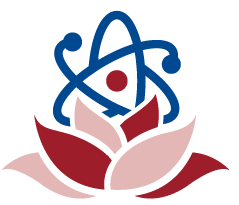| isotopes གནས་མཉམ་རྩ་རྫས། | chem. Atoms whose nuclei have the same number of protons but different numbers of neutrons. | ལྟེ་རྡུལ་དུ་ཡོད་པའི་ཕོ་རྡུལ་གྱི་ཁ་གྲངས་གཅིག་ཀྱང་བར་རྡུལ་གྱི་ཁ་གྲངས་མི་གཅིག་པའི་རྡུལ་ཕྲན། |
| Isotonic solution གར་ཤེད་མཉམ་པའི་བཞུ་ཁུ། | Biol. | |
| Isomorphism མཚུངས་གཟུགས། | biol. | |
| Isometric growth མཉམ་པའི་འཚར་འགྲོས། | biol. | |
| isomerase རྫས་མཚུངས་སྨིན་རྫས། | biol. Any of a group of enzymes that catalyze the conversion of one isomer into another. | རྫས་མཚུངས་འདུས་རྫས་གཅིག་ནས་གཞན་དུ་བརྗེ་སྒྱུར་གྱི་སྐུལ་རྐྱེན་བྱེད་མཁན་གྱི་སྨིན་རྫས་གང་རུང་རུང་ཞིག་ལ་ཟེར། |
| isoleucine རྫས་མཚུངས་ལུ་སིན། | chem. One of the amino acids found in proteins, considered essential for animal growth. | སྲོག་ཆགས་ཀྱི་འཚར་འཕེལ་ལ་གལ་ཆེན་ཡིན་ཞིང་སྤྲི་རྫས་ཀྱི་གྲུབ་ཆར་གྱུར་པའི་ཨེ་མི་ནོ་སྐྱུར་རྫས་ཤིག |
| isolated system ཁེར་གནས་མ་ལག | phys. A system that does not interact with its surroundings, that is, its total energy and mass stay constant. | རང་ཉིད་ཀྱི་ཉེ་འཁོར་དང་འབྲེལ་བ་མི་བྱེད་པའི་མ་ལག་ཅིག་ལ་གོ་ཞིང་། དེའི་ཁྱོན་སྡོམ་གྱི་ནུས་པ་དང་གདོས་ཚད་ལ་འགྱུར་བ་མེད། |
| Isocortex མཉམ་པའི་ཀླད་ཤུན། | neurosci. | |
| isocitrate རྫས་མཚུངས་སི་ཚྭ། | chem. Any salt or ester of isocitric acid | རྫས་མཚུངས་སི་སྐྱུར་གྱི་ཚྭའམ་སྐྱུར་ཚིལ་གང་རུང་ཞིག་ལ་གོ |
| Islet of Langerhans ལཱན་གྷར་ཧན་གྱི་ཕྲ་ཚོམ། | biol. | |
| island མཚོ་གླིང་། གླིང་ཕྲན། | biol. A mass of land that is surrounded by water and is smaller than a continent | གླིང་ཆེན་ལས་ཆུང་ཞིང་མཐའ་མཚམས་ཆུ་ཡིས་བསྐོར་བའི་ས་ཁུལ་ཞིག་ལ་གོ |
| ischemic stroke (ཀླད་པའི་) གྲང་གྲིབ། | biol. A cerebrovascular disorder caused by deprivation of blood flow to an area of the brain, generally as a result of thrombosis, embolism, or reduced blood pressure. | ཀླད་པའི་ཆ་ཤས་ཤིག་ལ་ཁྲག་གི་རྒྱུ་བ་ཉུང་དྲགས་པ་ལ་བརྟེན་ནས་བྱུང་བའི་ཀླད་པའི་ཁྲག་རྩའི་འཁྲུག་སྐྱོན་ཞིག་ལ་ཟེར་ཞིང་། སྤྱིར་བཏང་སྙིང་ཁམས་ཀྱི་ཁྲག་རྩའི་ནང་དུ་ཆགས་པའི་ཁྲག་ལིང་ངམ། རྩ་ལམ་རྒྱུ་འགོག།ཡང་ན་ཁྲག་ཤེད་ཆུང་དུ་ཕྱིན་པ་བཅས་ལ་བརྟེན་ནས་འབྱུང་། |
| Irritable bowel syndrome (IBS) རྒྱུ་སྨད་མི་བདེ་བའི་ནད་གཞི། | biol. | |
| Irreversible system ལྡོག་མེད་མ་ལག | Phys. | |
| Irreversible reaction ལྡོག་མེད་རྫས་སྦྱོར། | Phys. | |
